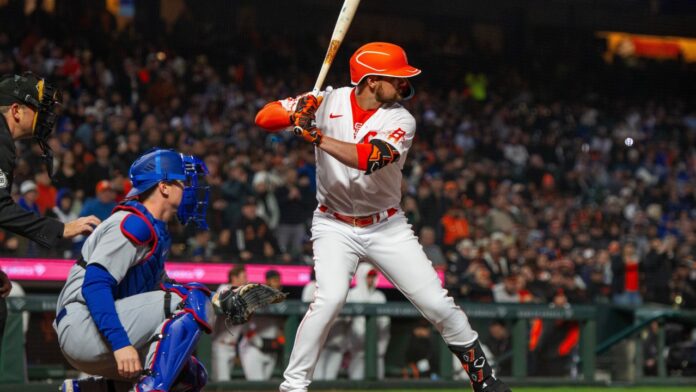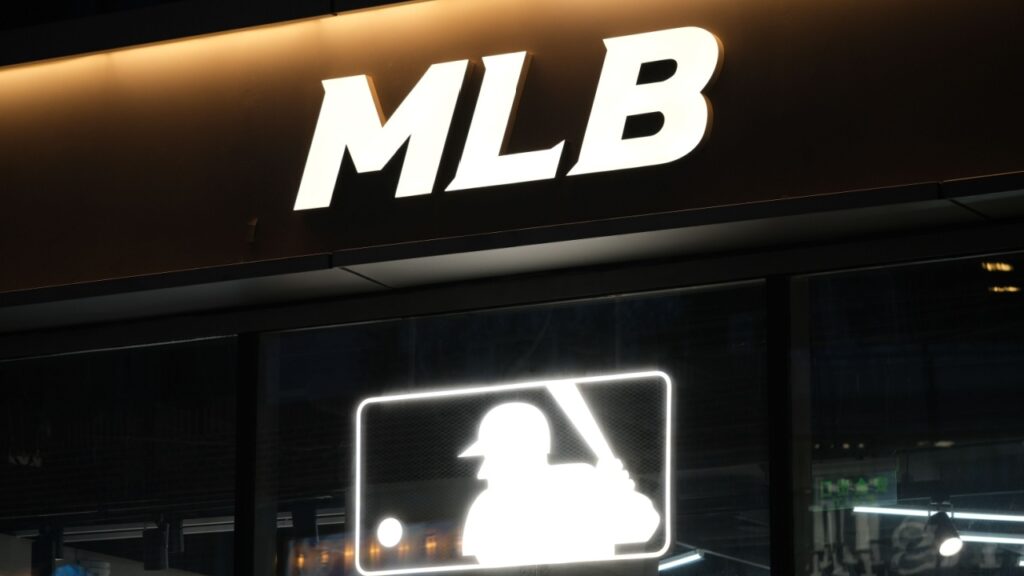
Baseball used to feel like a very American game. Today, it looks different. Big League Baseball (MLB) now welcomes players from all over the world. On Opening Day 2025, 265 players on rosters were born outside the United States, 27.8% of the total pool reported by MLB. The Dominican Republic led all countries with 100 players on those rosters. That means the game is more global than ever.

How the Wave of International Talent Began
Baseball’s international rise did not happen overnight. From the start, players from places like Puerto Rico, Cuba, and Mexico played in the majors. Over time, Japan’s real turning point came in 1995 when Hideo Nomo signed with the Los Angeles Dodgers.
Nomo’s success helped MLB teams see that top players could come from Japan. After Nomo, many more Japanese players made the move, and that helped MLB become more open to Asian talent.
Another giant step was Ichiro Suzuki. He joined the Seattle Mariners in 2001 and had a historic rookie season. Ichiro was a star who showed that a player from Japan could not only make it in MLB but also dominate. His success helped open the door for future stars like Shohei Ohtani. Ichiro later entered the Hall of Fame, which underlined how big his impact was.
Latin America has an even longer and deeper history with the majors. Stars like Roberto Clemente from Puerto Rico and Minnie Miñoso from Cuba were major figures long before the modern international pipeline existed. These players inspired young athletes across their countries and helped build strong baseball traditions. A few big moments opened new doors.
One early pioneer was Masanori Murakami. He was the first Japanese-born player to play in MLB when he debuted in 1964. His short stay mattered because it showed players in Japan could succeed in the U.S. But it was not until the 1990s that Japan became a steady source of big-league talent.
By the 1990s and 2000s, baseball scouting and club investment moved overseas in a big way. The Dominican Republic and Venezuela became steady sources of talent. Japan, Korea, Mexico, Cuba, and even countries in Europe and Africa added players to MLB rosters. In recent years, the league has tracked and reported these numbers so we can see how the trend grew year by year.

How International Players Get to MLB Today
There are a few main paths for international players to join an MLB team. These paths depend on the player’s country, age, and whether they already play professionally in another league.
First, many Latin American and Caribbean players sign as international free agents. MLB rules let teams sign players who are at least 16 years old during an international signing period (usually in July). Many players from places like the Dominican Republic and Venezuela sign as international amateur free agents. Current MLB rules say a player must be at least 16 to sign for the international class of player.
The modern signing window now runs Jan. 15–Dec. 15 (it used to open in July before the pandemic changes). Teams also operate international signing bonus pools that limit how much each club can spend on amateurs. Those pool rules were formalized in CBAs and expanded around 2012–2013.
Second, for Japan and South Korea, the system works differently. Players already under contract to professional clubs in Japan or Korea typically move through the posting system.
The posting framework was formalized in the late 1990s (1998) and was revised with new rules in December 2013. MLB teams then negotiate with the player while sending a fee to the original club. This system made big transfers like Daisuke Matsuzaka, Masahiro Tanaka, and Shohei Ohtani possible.
Third, there are also older players who sign as free agents from leagues around the world, and a few players come through smaller routes like the independent leagues or by playing in winter leagues.
Players from Cuba have a special story: for decades, many had to defect to sign in MLB. In 2018, MLB, the players’ union, and Cuba announced a plan to let Cuban players sign without defecting, a major change aimed at safer, legal transfers, even though details and timing have been complex.

A big reason international players keep coming is the academy model. MLB teams run training centers in places like the Dominican Republic and Venezuela. These academies train players in baseball skills, strength, classroom work (like English), and life skills.
The academies are a major place for talent to grow, and they also bring money and jobs to local communities. Those academies teach baseball skills, strength training, English, and life skills. They are a major source of players and also bring jobs and money into local economies; MLB and news coverage have documented significant spending and economic ties tied to academies and signing activity.
What International Players Mean for the Game, Teams, and Fans
On the field, the rise of international players has made MLB better. Top players from other countries bring new techniques, styles, and strengths. Ichiro’s speed and bat control changed how teams valued hitters. Shohei Ohtani showed the world that a two-way star is possible in the modern game. New pitchers and hitters sharpen competition and give teams more ways to win.
For teams, international scouting is now a core part of building a roster. Teams spend time and money scouting overseas. They open academies, hire local coaches, and make deals with trainers.
A strong international program can find stars cheaply, or at least find reliable pros who fit a team’s plans. That is one reason the Dominican Republic is so important: it produces many pros through a combination of culture, academies, and strong local play.
The Dominican Republic has been so important in recent decades. Depending on the year, the D.R. usually supplies around 100 players on Opening Day rosters (it was 108 in 2024 and 100 in 2025)
For fans, more international players make the game more global. Fans in the players’ home countries follow their stars. That creates new TV deals, new merchandise sales, and more interest abroad.
Economically, the flow of talent has a big effect on local towns where academies operate. Teams invest in training spaces and housing, and players who sign often send money back home. But that money alone does not solve bigger problems like poverty or weak local systems.
There are also big challenges. Age fraud and shady early deals have been a problem in places like the Dominican Republic. Players sometimes sign verbal agreements years before they can legally sign. That has caused pressure on kids and families and led to calls for reform.
MLB and outside groups have discussed an international draft to bring more fairness, but the idea is controversial. The players’ union and other groups worry a draft could hurt some players. The debate is ongoing.
Finally, immigration rules matter. When an international player signs with an MLB team, the club usually helps the player get a work visa (most commonly a P-1A visa for athletes). That process needs to prove the player will work for a U.S. team and often requires paperwork like Form I-129. Visa rules can affect how quickly a signed player can join a U.S. roster, and political changes can add new hurdles.
Frequently Asked Questions
Q: Where do most international MLB players come from?
A: The Dominican Republic is the single biggest source. Venezuela, Cuba, Mexico, Canada, and Japan are also major contributors. In 2025, the Dominican Republic, Venezuela, and Cuba were the top three countries in player count on Opening Day rosters.
Q: How many MLB players are born outside the U.S.?
A: On Opening Day 2025, about 27.8% of players were born outside the United States, that was 265 players. That number can move a little each year as rosters change.
Q: At what age can international players sign with MLB teams?
A: For most international amateur free agents, the rule is that they can sign at 16 years old. Teams often sign players in July during the international signing period. There are other rules about who can enter team academies and when.
Q: What is the posting system?
A: The posting system is how many Japanese (and some Korean) professionals move to MLB. Their team “posts” them, and MLB teams negotiate to sign the player. The system was created in the late 1990s and revised in 2013 to change how fees and negotiations work. It helped bring stars like Ichiro, Daisuke Matsuzaka, Masahiro Tanaka, and Shohei Ohtani to MLB.
Q: Are international players treated fairly when they sign?
A: The record is mixed. Many signings give life-changing chances and pay big bonuses. But there are well-documented problems, such as age fraud, early verbal deals, and exploitation by middlemen. MLB and other groups have tried rule changes and better oversight, but critics say more must be done.
Q: Do international stars change how baseball is played?
A: Yes. Players from different countries bring different training, styles, and strengths. Japanese players often emphasize speed and contact hitting; many Latin players bring power and flair. Two-way players like Ohtani showed new ways the game can be played. Overall, international talent raises the skill level and gives teams more choices.
Conclusion
- The story of international players in MLB is one of growth, talent, and change.
- It started with pioneers like Masanori Murakami, Minnie Miñoso, and Roberto Clemente, who opened the door for future stars.
- Hideo Nomo and Ichiro Suzuki helped open Japan to MLB and proved Japanese players could succeed at the highest level.
- The Dominican Republic and Venezuela became steady sources of talent.
- New rules — such as bonus pools and the posting system — reshaped how players move into MLB.
- Teams now scout and train across borders, opening academies and investing in local talent.
- Fans around the world follow and cheer for stars from their own countries, making MLB a global sport.
- At the same time, the system faces hard questions about the exploitation of young players.
- There is an ongoing debate on how to make signings fair and safe, with talks about reforms and possible drafts.
- Despite challenges, baseball’s heart is beating in more places than ever.
- More countries supply talent, which makes MLB stronger, more exciting, and more global.
Read More
- NFL Players Who Overcame Career-Threatening Injuries To Make A Comeback
- How Jackie Robinson Changed American Sports Forever
- Greatest Super Bowl Moments That Shaped Football History
This article was made with AI assistance and human editing.



